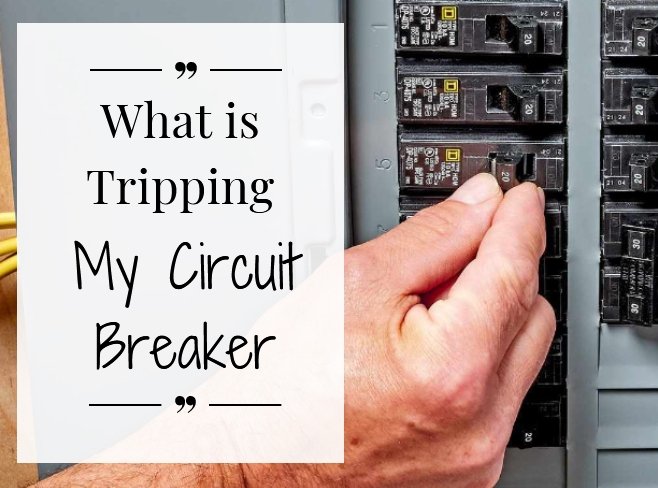How do I find what is tripping my circuit breaker? This is one of many popular questions about the house’s electrical system that has spread on internet forums. The answers are various, but this article has the most straightforward explanation!
Is It Dangerous if Circuit Breaker Keeps Tripping?
Yes, it is! Continuously tripping circuit breakers pose a potential danger. They indicate persistent circuit overloading, which exceeds safe voltage thresholds, increasing the risk of electrical fires. The circuit breaker’s role is critical as it interrupts electricity flow to prevent hazardous situations within your home.

Why is My Circuit Breaker Tripping for No Reason?
The term “No reason” does not make sense. A hidden reason or core issue causes your circuit breaker to trip, indicating that something within your home’s electrical circuits is amiss. In short, experiencing breaker tripping without an apparent cause can signal underlying issues.
Potential culprits include an overloaded circuit, overheated appliance, electrical short, or ground fault problem. When wires touch inappropriately, or a ground fault occurs, it can lead to immediate risks. Identifying the precise cause amidst various possibilities can be challenging and frustrating, requiring thorough troubleshooting to resolve the issue effectively.
How do I find out what Tripping My Circuit Breaker is?
Finding the core issues behind your tripping circuit breaker is simple! You can follow several easy steps below to know the factors causing your circuit breakers to trip:
● Identifying the Problematic Circuit
The initial task involves pinpointing the circuit causing the breaker to trip. This can be achieved by turning off all electrical appliances and devices and resetting the main circuit breaker. Gradually switch on individual circuits to isolate the culprit circuit.
Read also: Electric Heater Turns on and off Repeatedly
● Investigating Overloaded Circuits
Overloading a circuit is a frequent cause of breaker trips. Each circuit has a defined capacity measured in amps. If multiple high-power devices are plugged into one circuit, it can surpass its capacity, resulting in a trip. To mitigate this, redistribute devices across different circuits, ensuring a balanced load distribution.
Read also: How Is The Capacity Of A Water Heater Measured
● Detecting Short Circuits
Short circuits occur when a live wire contacts a neutral wire, creating a sudden surge in current. This poses a fire hazard due to excessive heat generation. Inspect outlets, switches, and cords for damage, fraying, or loose connections to identify short circuits. Consulting a licensed electrician is advisable for safe resolution.
● Evaluating Appliance Malfunctions
Malfunctioning appliances are another common trigger for breaker trips. Disconnect suspicious appliances from the circuit and reset the breaker. If the breaker holds, the appliance likely caused the issue. Professional inspection and repair by a qualified electrician are recommended to address faulty appliances promptly.
● Examining Outdoor Electrical Systems
Outdoor electrical components can also contribute to breaker trips. Inspect outdoor outlets, lights, and extension cords for damage or exposure to moisture, as these can lead to short circuits. Consultation with an electrician is prudent for waterproofing or replacing affected components.
● Seeking Professional Assistance
Suppose the cause of the breaker trip remains elusive after conducting the steps above. In that case, it might be time to consider the installation of ground fault circuit interrupters (GFCIs) as a preventative measure. Additionally, seeking assistance from experienced electricians is imperative.
To ensure safety and efficiency, they can comprehensively inspect the electrical system, identify underlying issues, and implement necessary repairs or upgrades, including GFCIs. Regular use of GFCIs in areas prone to moisture, such as bathrooms and kitchens, can significantly enhance your home’s electrical safety.
Regular annual maintenance can further preempt potential issues and maintain electrical system functionality.
In conclusion, tripping circuit breakers pose significant risks, indicating underlying issues within electrical systems. Continual tripping can lead to hazardous situations, such as fires, necessitating prompt attention.
As a homeowner, you can mitigate risks by identifying problematic circuits, investigating overloads, detecting short circuits, evaluating appliance malfunctions, and examining outdoor electrical systems.
Seeking professional assistance is crucial when troubleshooting becomes challenging. Regular maintenance helps prevent future incidents, ensuring the safety and efficiency of the electrical system. Addressing circuit breaker tripping promptly and comprehensively is essential for maintaining a safe living environment.


